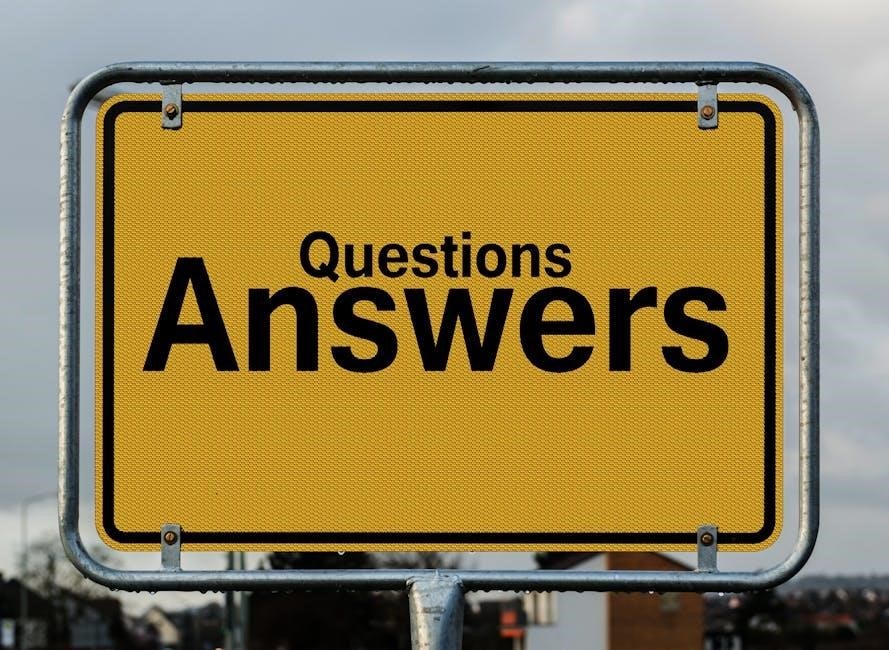The concept of compound probability is introduced through worksheets and exercises, providing students with a solid foundation in probability theory using online resources and study materials effectively always․
Definition of Compound Probability
A compound probability refers to the probability of multiple events occurring together, which can be calculated using various rules and formulas․ The concept of compound probability is essential in understanding real-world phenomena and making informed decisions․ According to online resources, a compound event represents a series of events happening at the same time or in order․ To calculate the probability of compound events, one can multiply the probabilities of each individual event․ This concept is often introduced through worksheets and exercises, providing students with a solid foundation in probability theory․ By understanding compound probability, individuals can better analyze and predict outcomes in various fields, including science, engineering, and finance․ The definition of compound probability is crucial in developing a comprehensive understanding of probability theory and its applications․ Using online study materials and resources can help individuals grasp this concept more effectively․

Benefits of Compound Events Worksheets
Compound events worksheets provide students with various benefits, including improved understanding and problem-solving skills, using online resources effectively always and easily․
Strengthening Student Basics
Compound probability worksheets are designed to strengthen student basics in probability theory, providing a solid foundation for further learning and exploration of complex concepts․ The worksheets offer a range of exercises and problems that help students develop their understanding of compound events and how to calculate their probabilities․ By working through these exercises, students can improve their problem-solving skills and develop a deeper understanding of the underlying principles of probability․ The worksheets also provide opportunities for students to practice applying the multiplication rule and addition rule, as well as to explore the concept of complementary events․ Through regular practice and review, students can build a strong foundation in compound probability and develop the skills and confidence they need to succeed in more advanced math classes․ Effective learning and understanding of compound probability are essential for students․
Calculating Compound Probability
Calculating compound probability involves multiplying probabilities of individual events using the multiplication rule effectively always with online resources and study materials available for students everywhere․
Multiplication Rule
The multiplication rule is a fundamental concept in calculating compound probability, where the probability of two or more events occurring is found by multiplying the probabilities of each individual event․ This rule is essential in determining the likelihood of multiple events happening together․ The multiplication rule can be applied to both independent and dependent events, and it is crucial to understand the difference between these two types of events․ By using the multiplication rule, students can solve complex probability problems and develop a deeper understanding of compound probability․ Online resources and study materials provide numerous examples and exercises to help students master the multiplication rule and apply it to real-world problems, making it an essential tool in their probability toolkit, allowing them to calculate probabilities with ease and accuracy always․
Adding Probabilities
Adding probabilities is a crucial concept in compound probability, where the probability of two or more events occurring is found by adding the probabilities of each individual event․ This concept is essential in determining the likelihood of multiple events happening together․ The addition rule is used to calculate the probability of mutually exclusive events, where the occurrence of one event excludes the occurrence of the other․ Online resources and study materials provide numerous examples and exercises to help students master the concept of adding probabilities, making it an essential tool in their probability toolkit․ By understanding how to add probabilities, students can solve complex probability problems and develop a deeper understanding of compound probability, allowing them to calculate probabilities with ease and accuracy, and apply it to real-world problems, using worksheets and exercises to reinforce their learning and understanding of the concept always․

Types of Compound Events
Compound events include dependent and independent events, occurring together or separately, with varying probabilities and outcomes always using online resources and study materials effectively․
Dependent and Independent Events
Compound events can be classified into dependent and independent events, where the occurrence of one event affects the probability of the other․ In dependent events, the probability of the second event is influenced by the outcome of the first event․ On the other hand, independent events are those where the occurrence of one event does not!
affect the probability of the other․ Understanding the difference between dependent and independent events is crucial in calculating compound probabilities․ Using online resources and study materials, students can learn to identify and calculate probabilities of dependent and independent events, and apply this knowledge to solve problems․ By practicing with worksheets and exercises, students can develop a deeper understanding of compound probability concepts and improve their problem-solving skills․ This knowledge is essential in various fields, including mathematics, statistics, and science․
Real-World Applications
Compound probability is used in insurance, finance, and engineering to calculate risks and probabilities of events occurring in real-life situations effectively always online․
Example Problems
Example problems in compound probability worksheets include rolling two dice, spinning a spinner, and drawing cards from a deck․ These problems help students understand how to calculate probabilities of compound events․ The worksheets provide a variety of questions, such as finding the probability of getting a certain number on a dice roll or the probability of drawing a specific card from a deck․ Students learn to apply the multiplication rule and addition rule to solve these problems․ The example problems also cover dependent and independent events, helping students to distinguish between the two․ By working through these example problems, students gain a deeper understanding of compound probability and develop their problem-solving skills․ The worksheets are designed to be engaging and challenging, making learning compound probability fun and effective for students of all levels․ Online resources are available to support learning․

Worksheet Exercises
Students complete exercises to practice calculating compound probabilities using online worksheets and resources effectively always with answers provided in pdf format for easy reference․
Practice Problems
Practice problems are an essential part of learning compound probability, allowing students to apply their knowledge and skills to real-world scenarios and exercises․
The problems provided in the worksheet are designed to test students’ understanding of compound probability concepts, including multiplication and addition rules․
Students can use online resources and study materials to help them complete the practice problems, and answers are typically provided in pdf format for easy reference․
By working through the practice problems, students can develop a deeper understanding of compound probability and improve their ability to calculate probabilities in different situations․
The practice problems cover a range of topics, from simple to complex, and are designed to help students build confidence and fluency in their calculations․
Overall, the practice problems are a valuable tool for students learning about compound probability․

Answers and Solutions
Answers and solutions are provided in pdf format for easy reference and checking of work accurately and efficiently always online․
Checking Answers
To ensure accuracy and understanding, it is essential to check answers using the provided solutions in the compound probability worksheet with answers pdf․
The process involves reworking the problems and comparing the results with the given answers․
This step helps identify mistakes and areas that require further review and practice․
By checking answers, students can assess their knowledge and reinforce their understanding of compound probability concepts․
The solutions are typically provided in a clear and concise manner, making it easier for students to follow and understand․
Additionally, the use of online resources and study materials can facilitate the checking of answers and provide additional support when needed․
Overall, checking answers is a crucial step in the learning process, and it helps students build confidence in their ability to solve compound probability problems․
It is an essential part of the learning process that helps students achieve their goals․